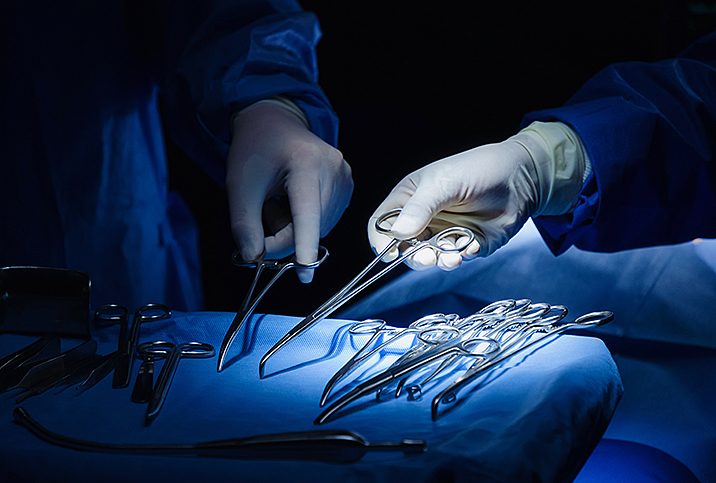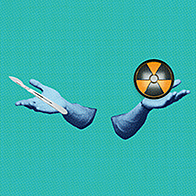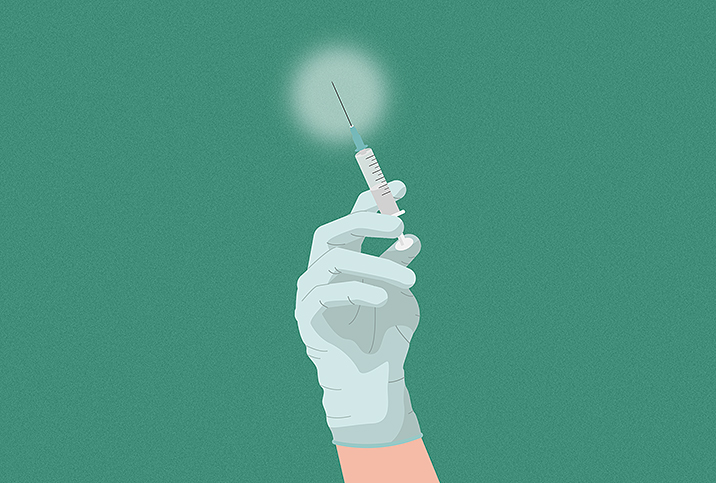Sometimes, Surgery Is the Best Option for Prostate Cancer

Prostate cancer is the second leading cause of cancer death in American men, according to the American Cancer Society. Despite this fact, more than 3 million men who experienced it are still alive today. In 2021, the ACS estimates 34,130 people will die from it. And though death is never a good outcome regardless of the number, the reality for most men who contract prostate cancer is that they'll survive.
As the American Society of Clinical Oncology identifies, the five-year survival rate for men with prostate cancer is an encouraging 98 percent, which is the same as the 10-year survival rate. Still, most men are unlikely to be aware they're developing prostate cancer until they're being screened for it.
"Today, most men are diagnosed with prostate cancer after detecting an elevated blood prostate-specific antigen (PSA) value or abnormal prostate exam," said Brian Helfand, M.D., division chief of urology at NorthShore University HealthSystem in Chicagoland. "At this early stage of prostate cancer, there are typically no symptoms.
For more aggressive forms of prostate cancer, doctors are likely to suggest more intense treatment options, such as radiation or surgery.
"It is important to distinguish which men with prostate cancer need to be treated. About half of newly diagnosed prostate cancers are considered low risk. This means that the risk of the tumor spreading outside of the prostate or harming a man is low."
Helfand explained men who are low risk should still consider implementing an active surveillance system—periodic prostate biopsies and blood PSA tests—to ensure their cancer is not spreading. However, for more aggressive forms of prostate cancer, doctors are likely to suggest more intense treatment options, such as radiation or surgery.
"As a general rule, the more aggressive the prostate cells at the time of diagnosis, the more surgery may offer the best chance of cure, provided the cancer has not yet left the prostate gland," said Dan Sperling, M.D., medical director of the Sperling Prostate Center in Delray Beach, Florida. "Before surgery, this should be assessed by mpMRI. If the cancer is contained, surgery is indicated."
What is prostate cancer surgery like?
Traditional prostatectomy surgeries usually involve cutting the patient open from the belly button to the pubic bone or from the anus to the scrotum. These surgeries, while effective, are invasive and can lead to unpleasant side effects.
Sperling explained some men—roughly 6 percent to 8 percent—will experience mild bladder-control issues lingering beyond the four to six weeks postsurgery. These issues tend to resolve after six weeks to 18 months. At the very least, they can be managed.
However, substantially more men—up to 85 percent—will experience issues with erectile dysfunction postsurgery. Penile rehabilitation can help most men regain satisfactory function, but the process can take three months to two years.
Luckily, most prostate cancer surgeries in the United States are now performed with a minimally invasive robotic approach known as robotic prostatectomy. The benefits of robotic prostatectomies include less pain, less blood loss, a shorter hospital stay and a faster recovery time compared to traditional prostatectomies.
"Robotic surgery is the more accurate and precise way to surgically treat prostate cancer because of its superior effectiveness in tissue dissection," said S. Adam Ramin, M.D., medical director of Urology Cancer Specialists in Los Angeles. "Due to the precision and accuracy of the robotic instruments used during the procedure, the surgeon is provided with an enhanced ability to navigate the pelvis and is able to make very precise dissections around delicate nerves, without cutting into them."
It's the preservation of these nerves that provides the best chance for patients to maintain both their sexual function and their bladder control. Those two aspects directly affect patients' quality of life in the weeks and months after surgery.
Ramin credited robotic surgery for minimizing the side effects associated with more invasive surgeries, which should provide a sigh of relief for anyone opting to surgically combat prostate cancer, especially young men who fear a lifetime of erectile issues.
Additionally, Ramin pointed out that men with preexisting medical conditions, such as heart disease and morbid obesity, or who have undergone previous prostate surgeries and radiation can undergo robotic surgery. Surgeons are generally looking for two things when they recommend robotic surgery:
- Cancer that is clinically confined to the prostate.
- A healthy enough lifestyle that the patient would be expected to live at least five years upon removal of the cancer.
Helfand pointed out another reason men might opt for surgery, especially if they're young: If the cancer returns, other options are still available postsurgery, including radiation. He also emphasized that a major component of a successful surgery comes down to the surgeon's experience, and recommends that men ask their surgeons how many procedures they perform each year.
What can I do to reduce the risk of prostate cancer?
Although modern robotic surgery is a great option for men with aggressive prostate cancer, it would always be better not to have cancer in the first place. As Helfand pointed out, though, you can't guarantee anything when it comes to the disease. With prostate cancer, there are many factors at play, including race, genetics, geographical location and age.
As nice as it would be to say that avoiding soy, for example, could help reduce the risk of prostate cancer, ultimately, there is limited data to imply any specific foods or behaviors can absolutely increase a man's risk.
"However, evidence derived from men with advanced prostate cancer suggests that men who have a more ideal body weight and who exercise more frequently generally have better cancer outcomes," Helfand said.
'If early prevention and detection were in a horse race, they'd be the favored winners over ignorance and procrastination every single time.'
Doctors recommend regular exercise—try to get at least 30 minutes a day three times a week (preferably five times)—and a heart-healthy diet, which means lower amounts of simple sugars and higher relative quantities of fruits, vegetables and proteins. Also, limit your intake of barbecued and smoked meats; Helfand said these may contain toxins that could promote prostate cancer.
These healthy lifestyle choices can also help men recover postsurgery and limit the severity of any side effects they might experience.
Regular screenings and conversations with a trusted medical professional can help to identify early signs of prostate cancer. As with any cancer, the earlier it is detected, the more capable you will be of combating it.
"If early prevention and detection were in a horse race," Ramin said, "they'd be the favored winners over ignorance and procrastination every single time."




















